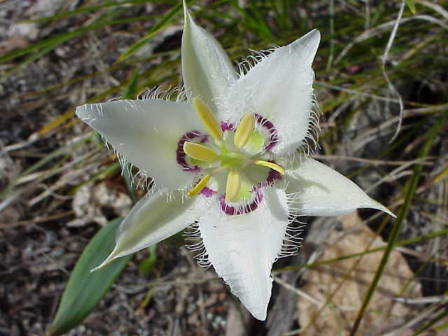One rare forest plant which stands out, not only because of its beauty, but because it is currently red-listed, is Lyall’s mariposa lily, Calochortus lyallii (Government of British Columbia, 2001). This plant species is at risk under its current conditions. The purpose of this project will be to explore and present areas where the mariposa lily could be reintroduced across the Southern Okanagan Basin.
This project will use specific characteristics of the mariposa lily’s range and habitat, in an attempt to find new suitable areas for the reintroduction of this species. Currently, there are only 11 known populations of the mariposa lily across BC (Miller & Allen, 2001). This rare forest plant does not possess any other known mechanism for dispersing its seeds aside from gravity, and thus seeds can only drop to the ground below the plant (Miller & Douglas, 1999). This type of dispersal mechanism, or lack of a viable mechanism, is a limiting factor in the lily’s ability to establish new populations (Miller & Douglas, 1999). Using plants which have been reared from the current mariposa lily populations, the species will be reintroduced if suitable locations are found through this analysis. By finding suitable areas, this species can be reintroduced for both intrinsic and extrinsic value. The lily will be preserved as a species and will continue to beautify the landscapes of the Southern Okanagan Basin.
To determine suitable areas for the reintroduction of the mariposa lily, a Mulit-Criteria Evaluation (MCE) will be preformed. This will involve non-Boolean standardization of the factors and an aggregation method called the Weighted Liner Combination. Non-Boolean standardization is done to make all factors have a continuous scale of suitability, allowing them to be compared and combined. The continuous scale occurs from 0, which has the least suitability, to 255, which has the highest suitability. The Weighted Linear Combination (WLC) allows specific factor weights to be assigned to each factor. This process gives a user added control over choosing the importance, or unimportance of the factors used.
Since MCE is a method used to assess and combine many criteria at one time, specific factors and constraints relating to the mariposa lily’s distribution will be chosen. MCE is thus a perfect method for which to perform this project.

Image source: Picture of Calochortus lyalli, CWNP Photo Gallery (www.cwnp.org/photopgs/cdoc/calyallii.html)
